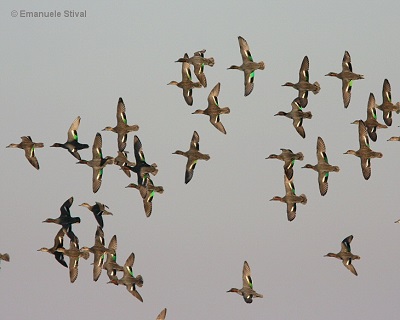Avian influenza, increasing cases in wild birds. Raising the alert level to mammals
After spillover events in bred minks, the attention of the health authorities is growing towards mutations of the H5N1 virus that could facilitate the passage to mammals and humans.
The evolution of the global avian influenza situation in recent months has raised some concern among the international scientific community. After confirmed cases of transmission of highly pathogenic H5N1 virus (HPAI) from birds in certain mammalian species (e.i. mink), the World Health Organization (WHO) and the World Organisation of Animal Health (WOAH) called on all countries to raise the alert level for the arrival of a new influenza pandemic in the human population supported by an avian virus.
According to epidemiological data from the National and European Reference Centre for Avian Influenza at the Istituto Zooprofilattico Sperimentale delle Venezie (IZSVe), in Italy the circulation of H5N1 virus among wild birds is increasing, with the risk that they may transmit the virus to poultry farms. The Ministry of Health issued a note a few days ago, addressed to all Regional Veterinary Services and Italian Zooprophylactic Institutes, which considers it necessary to strengthen the surveillance of wild birds and the application of biosecurity measures in poultry holdings.
Since September 2022, in wild birds 79 positive cases have been officially confirmed among gulls (19), teal (13), mallards- Anas platyrhynchos (10) and other birds of prey and anatids. Many other suspicious cases in seagulls are being confirmed at the IZSVe.
The persistence of cases in the wild highlights the continued circulation of H5N1 on Italian territory in line with what is happening in other European and non-European countries where there is an increase in cases also in poultry and wild mammals. Sporadic cases in domestic mammals were also reported.
In domestic birds, the situation is more favourable, after the dramatic epidemic wave of H5N1 HPAI that mainly affected the northeast of Italy in winter 2021-2022, with 317 outbreaks in farms. The last outbreak in poultry occurred on 23 December 2022; since September 2022, the number of cases confirmed is 30. The outbreaks were mainly in Veneto, Lombardy and Emilia Romagna regions.
Read News on the IZSVe website
Source: S.I.Ve.M.P.
© IZSAM February 2023
|
|
Istituto Zooprofilattico Sperimentale
dell'Abruzzo e del Molise "G. Caporale"
Campo Boario | 64100 TERAMO | ITALIA
Telefono 0039.0861.3321 | Fax 0039.0861.332251
e-mail: archivioeprotocollo@izs.it
Posta elettronica certificata: protocollo@pec.izs.it
Partita IVA: 00060330677
Codice Fiscale: 80006470670



